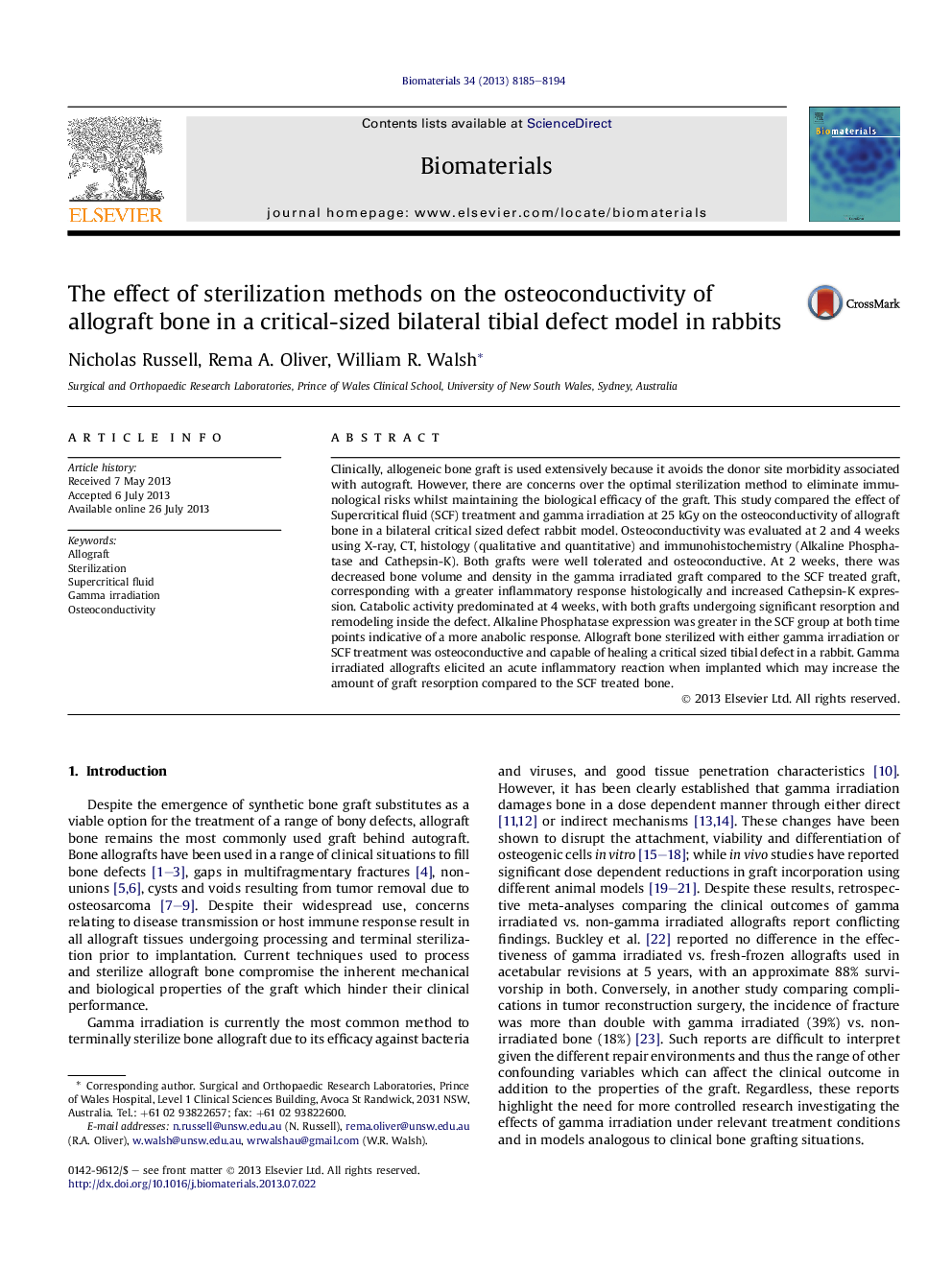| Article ID | Journal | Published Year | Pages | File Type |
|---|---|---|---|---|
| 10228490 | Biomaterials | 2013 | 10 Pages |
Abstract
Clinically, allogeneic bone graft is used extensively because it avoids the donor site morbidity associated with autograft. However, there are concerns over the optimal sterilization method to eliminate immunological risks whilst maintaining the biological efficacy of the graft. This study compared the effect of Supercritical fluid (SCF) treatment and gamma irradiation at 25Â kGy on the osteoconductivity of allograft bone in a bilateral critical sized defect rabbit model. Osteoconductivity was evaluated at 2 and 4 weeks using X-ray, CT, histology (qualitative and quantitative) and immunohistochemistry (Alkaline Phosphatase and Cathepsin-K). Both grafts were well tolerated and osteoconductive. At 2 weeks, there was decreased bone volume and density in the gamma irradiated graft compared to the SCF treated graft, corresponding with a greater inflammatory response histologically and increased Cathepsin-K expression. Catabolic activity predominated at 4 weeks, with both grafts undergoing significant resorption and remodeling inside the defect. Alkaline Phosphatase expression was greater in the SCF group at both time points indicative of a more anabolic response. Allograft bone sterilized with either gamma irradiation or SCF treatment was osteoconductive and capable of healing a critical sized tibial defect in a rabbit. Gamma irradiated allografts elicited an acute inflammatory reaction when implanted which may increase the amount of graft resorption compared to the SCF treated bone.
Related Topics
Physical Sciences and Engineering
Chemical Engineering
Bioengineering
Authors
Nicholas Russell, Rema A. Oliver, William R. Walsh,
